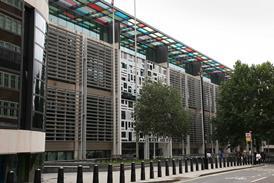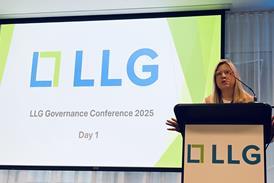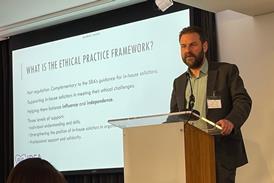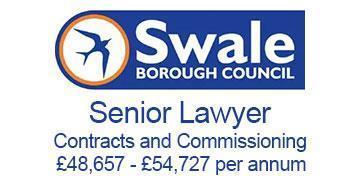The air we breathe is killing us, claiming seven million lives each year according to the World Health Organization (WHO). This invisible threat triggers health conditions, from lung cancers and strokes to asthma and chronic obstructive pulmonary disease.


When WHO examines air pollution, it sees a complex web of chemicals, physical agents and biological substances disrupting our atmosphere’s delicate balance. Among the culprits are the pollutants nitrogen dioxide (NO2), ozone (O3), particulate matter (PM10 and PM2.5) and sulphur dioxide (SO2).
This article examines how regulators and courts are reshaping environmental compliance, analysing recent legal developments in the European Union.
Legal frameworks
WHO guidelines
The WHO’s global air quality guidelines provide evidence-based recommendations on pollutant limits, encouraging governments to ensure air quality that protects public health. First introduced in 1987, these have evolved, with the latest update in 2021. Though non-binding, they serve as a crucial tool for policymaking and pollution control. In fact, the EU is actively aligning its regulations with these guidelines to better meet the WHO standards.
EU regulations
The EU has had air quality policies since the 1980s, leading to a significant reduction in pollutants. However, challenges remain with many regions still exceeding WHO limits. Hence, the revised Ambient Air Quality Directive, effective December 2024, introduces stricter standards, including a reduction of over 50% in the annual limit for PM2.5. It also updates the standards for pollutants such as benzene, lead and carbon monoxide, and grants individuals the right to seek compensation for air pollution-related harm. EU member states must implement these changes by 2026.
French law
France’s main air pollution law – the 1995 LAURE law – affirms the right to clean air and establishes a nationwide monitoring system. This is managed by the ministry responsible for the environment and regional air quality associations. The French government also enacts policies like the national plan to reduce pollutants (PREPA) and provides financial incentives for private operators. Recent amendments, in line with the EU’s 2024 revisions, will tighten regulations and targets.
Judicial actions and court rulings
Court of Justice of the European Union
In a landmark 2014 decision, the CJEU ruled that EU member states must not only create air quality plans but also meet air pollution limits, making compliance an obligation of result. This decision came after environmental group ClientEarth challenged the UK’s failure to meet NO2 limits. Since then, several EU countries, including France, have faced legal action for violating air quality standards. France, for instance, has been repeatedly fined for exceeding NO2 and PM10 limits in cities. The European Commission issued a formal notice to France for failing to meet NO2 pollution limits.
National courts
National courts are also asked to look into their governments’ compliance with EU regulations. The French Conseil d’État has fined the government for not meeting air quality limits, including €10m for delays in 2021 and 2022. Although there has been improvement in some areas, cities including Paris and Lyon still exceed pollution limits, leading to further fines.
Similarly, Germany’s Higher Regional Administrative Court in 2024 ordered the government to revise its National Air Pollution Control Programme to better meet EU standards. Recently, ClientEarth has filed a lawsuit against Poland on behalf of two asthma sufferers, seeking compensation for health damages.
European Court of Human Rights
In April 2024, the ECtHR ruled that states must address rising greenhouse gas emissions to protect human rights. While the court dismissed the claim under Article 2 (right to life) of the European Convention on Human Rights (ECHR), it recognised that severe environmental harm could infringe Article 8 (right to private and family life).
More recently, last month the ECtHR ruled for the first time that a state’s failure to take necessary measures to protect citizens from the dangers of pollution violates the human right to life. The case focused on the pollution of Terra dei Fuochi in Campania, caused by the dumping and burning of hazardous waste. These landmark decisions are likely to set a precedent for future legal actions on similar grounds.
Future developments
The legal framework governing air pollution is undergoing significant transformation, with the revised Directive of 23 October 2024 establishing new mechanisms for individuals to seek remedies for health-related damages.
Legal actions under the ECHR, specifically articles 2 and 8, are also likely to gain traction. These mechanisms will empower citizens to hold governments accountable for failing to take timely and effective action.
Industries and manufacturers face evolving compliance requirements as key contributors to air quality management. This shifting landscape of legal obligations, regulatory standards, and financial considerations will reshape how businesses approach environmental stewardship and operational sustainability.
In conclusion, European air pollution law is undergoing a profound transformation, driven by stricter EU regulations and landmark court decisions. The 2024 EU Ambient Air Quality Directive marks a crucial shift by introducing tougher standards and individual compensation rights. Both governments and industries must now navigate this evolving landscape of environmental compliance.
Sylvie Gallage-Alwis is a partner and Anélia Naydenova an associate with Signature Litigation, London































No comments yet